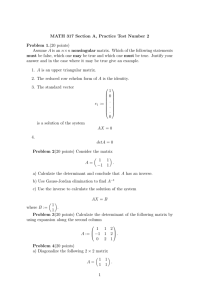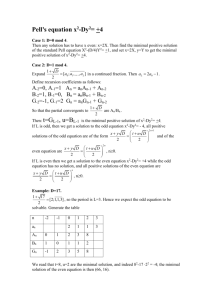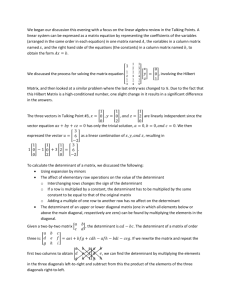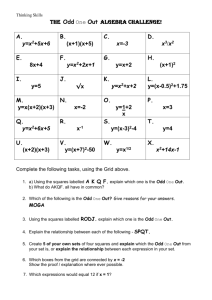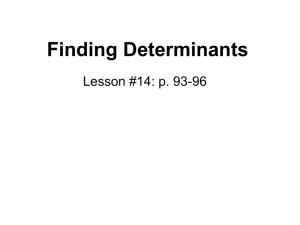Odd goings on: In a party with n people, it is known that for every
advertisement
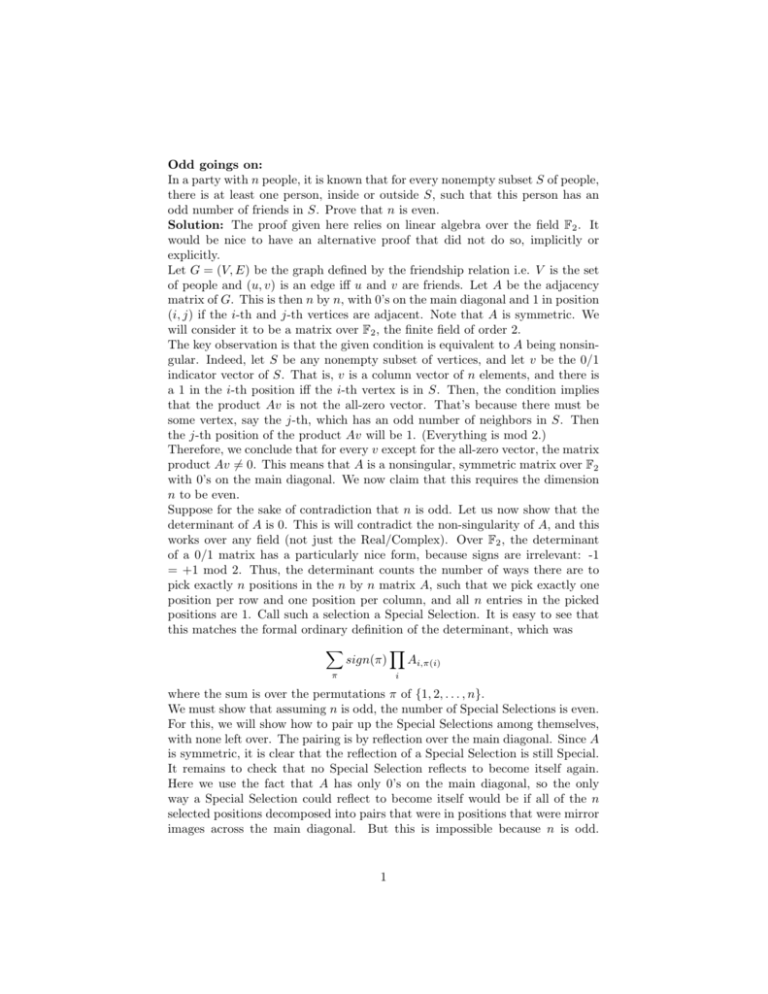
Odd goings on:
In a party with n people, it is known that for every nonempty subset S of people,
there is at least one person, inside or outside S, such that this person has an
odd number of friends in S. Prove that n is even.
Solution: The proof given here relies on linear algebra over the field F2 . It
would be nice to have an alternative proof that did not do so, implicitly or
explicitly.
Let G = (V, E) be the graph defined by the friendship relation i.e. V is the set
of people and (u, v) is an edge iff u and v are friends. Let A be the adjacency
matrix of G. This is then n by n, with 0’s on the main diagonal and 1 in position
(i, j) if the i-th and j-th vertices are adjacent. Note that A is symmetric. We
will consider it to be a matrix over F2 , the finite field of order 2.
The key observation is that the given condition is equivalent to A being nonsingular. Indeed, let S be any nonempty subset of vertices, and let v be the 0/1
indicator vector of S. That is, v is a column vector of n elements, and there is
a 1 in the i-th position iff the i-th vertex is in S. Then, the condition implies
that the product Av is not the all-zero vector. That’s because there must be
some vertex, say the j-th, which has an odd number of neighbors in S. Then
the j-th position of the product Av will be 1. (Everything is mod 2.)
Therefore, we conclude that for every v except for the all-zero vector, the matrix
product Av 6= 0. This means that A is a nonsingular, symmetric matrix over F2
with 0’s on the main diagonal. We now claim that this requires the dimension
n to be even.
Suppose for the sake of contradiction that n is odd. Let us now show that the
determinant of A is 0. This is will contradict the non-singularity of A, and this
works over any field (not just the Real/Complex). Over F2 , the determinant
of a 0/1 matrix has a particularly nice form, because signs are irrelevant: -1
= +1 mod 2. Thus, the determinant counts the number of ways there are to
pick exactly n positions in the n by n matrix A, such that we pick exactly one
position per row and one position per column, and all n entries in the picked
positions are 1. Call such a selection a Special Selection. It is easy to see that
this matches the formal ordinary definition of the determinant, which was
X
Y
sign(π)
Ai,π(i)
π
i
where the sum is over the permutations π of {1, 2, . . . , n}.
We must show that assuming n is odd, the number of Special Selections is even.
For this, we will show how to pair up the Special Selections among themselves,
with none left over. The pairing is by reflection over the main diagonal. Since A
is symmetric, it is clear that the reflection of a Special Selection is still Special.
It remains to check that no Special Selection reflects to become itself again.
Here we use the fact that A has only 0’s on the main diagonal, so the only
way a Special Selection could reflect to become itself would be if all of the n
selected positions decomposed into pairs that were in positions that were mirror
images across the main diagonal. But this is impossible because n is odd.
1
Hence no Special Selection reflects back to itself, and we conclude that in the
determinant calculation, we have an even number of Special Selections, yielding
a determinant of 0.
Acknowledgement: We thank Jim Boyce, Gaurav Gaurav, Shyamal Mukherjee, Afshin Nikzad and Kuang Simeng for their solutions and Michael Perrone,
Lily Serporian and Alex Yielding for their contributiuons.
2
